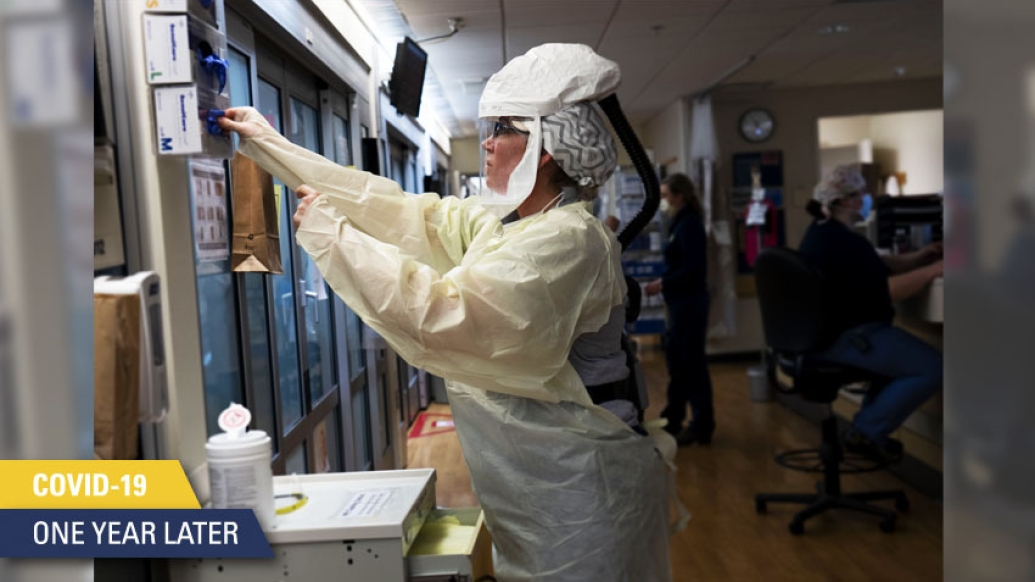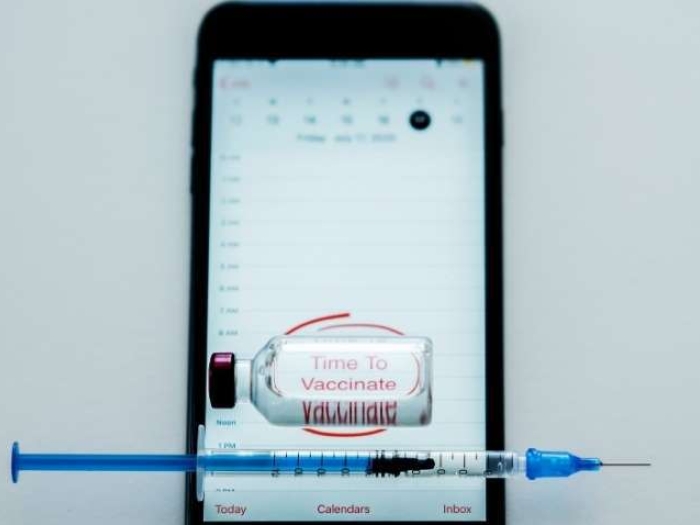A Michigan Medicine team’s online guidelines have been viewed more than 30,000 times by providers in 150 countries since the beginning of the pandemic.
3:53 PM
Author |

This article is part of a series marking one year since the COVID-19 and pandemic began. Read more articles on the coronavirus from the Michigan Health and Michigan Health Lab blogs.
How do you treat a disease no one has ever seen before? When the coronavirus pandemic hit the United States in early 2020, health care workers scrambled to find anything at all to help their patients.
At Michigan Medicine, a group of experts came together last Spring to review all of the available evidence gleaned from early experience with the pandemic in China and Italy, as well as information from lab studies, as patient after patient began to seek care.
Under normal circumstances, the Antimicrobial Stewardship Program, a collaboration between the Division of Infectious Diseases, the Division of Pediatric Infectious Diseases, the Department of Pharmacy Services, Infection Prevention and Clinical Microbiology, helps improve the health system's use of antimicrobial therapies and optimize treatment of a wide range of infections.
Knowing that certain high-value antibiotics are the last line of defense between patients and deadly pathogens, optimizing their use—and reducing the chance for bacteria to become resistant—is of utmost importance for the individual patient and society.
When faced with SARS-CoV2, the virus behind COVID-19, they suddenly had an unfamiliar foe.
"I think in the beginning it was very difficult to come up with an evidence-based strategy to treat COVID-19 because we didn't know what therapeutics were actually going to improve patient outcomes," says Tejal Gandhi, M.D., associate professor in the Division of Infectious Diseases and a director of the Antimicrobial Stewardship Program.
She and her team quickly developed what would become a critical set of treatment guidelines initially based on in vitro studies of the virus and observational data from ongoing patient care.
Like Podcasts? Add the Michigan Medicine News Break on iTunes, Google Podcast or anywhere you listen to podcasts.
Experts from the program "were always checking for updated information, preprints, updates from NIH and from the Infectious Disease Society of America—anything we felt could be practice-changing, we reviewed as quickly as we could," says Gandhi.
Their resulting recommendations were then discussed with the infectious diseases division, and then shared with the other departments closely engaged in COVID-patient care, such as critical care, hospital medicine, and emergency medicine, as well as hospital leadership.
Their COVID-patient care guideline document also became a frequently utilized resource for clinicians outside of Michigan Medicine. It was included on the website UpToDate, a popular clinician reference tool. Says Gandhi, "the website housing our guidelines has been accessed more than 30,000 times from 150 countries."
Options for COVID treatment
Over the past year, various therapies for COVID-19 have been tried and then abandoned, including at one point, the much hyped hydroxychloroquine, a drug typically used to treat malaria, lupus and arthritis.
"Hydroxychloroquine was one of our biggest challenges as the data to support its use was not robust," says Gandhi. "But there was desperation to have some therapeutics to offer. I think it was in our guidelines for a week or two in March, but we quickly decided based on our own experience with COVID patients that this wasn't actually helping and was causing side effects."
SEE ALSO: Seeking Medical Care During COVID-19
Gandhi describes the guidelines as a living document, with more than 30 revisions and counting as trial data for other potential therapeutics become available.
Currently, the Antimicrobial Stewardship Program guidelines outline a handful of therapies with evidence for improving outcomes in hospitalized patients, including the antiviral drug remdesivir, the steroid dexamethasone and a powerful anti-inflammatory, tocilizumab. However, one of the biggest success stories for patients not yet hospitalized with COVID-19 has been a program led by the Antimicrobial Stewardship Team, designed to administer a treatment to keep some high risk patients out of the hospital entirely.
Overcoming challenges, and a new strategy for treating early COVID infections
Monoclonal antibodies are proteins that mimic the body's immune response to SARS-CoV-2 and are designed to block its entry into cells.
When bamlanivimab, a monoclonal antibody therapy, was granted emergency use authorization in early November, Lindsay Petty, M.D., assistant professor in the division of infectious diseases, worked with her colleagues in the Antimicrobial Stewardship Program, the Ambulatory Infusion Team, and the Pharmacy Department, to overcome some significant barriers to its use.
Preliminary evidence found that the therapy was most effective early in the course of infection, within four days of the onset of symptoms. At the end of last year, access to testing could still be delayed and some patients sought testing later in their illness—pushing them outside of that ideal therapeutic window, says Petty.
One of the other barriers is the fact that the therapy can only be delivered by IV infusion. When the treatment was first approved, it required "an hour long infusion with an hour long observation," says Petty. The Emergency Department, where monoclonal antibodies are often delivered, was not a practical option at Michigan Medicine, because it was already at a high volume, making delivery in that setting less optimal.
SEE ALSO: Keeping Our Patients Safe During COVID-19
And a typical infusion center delivers care to immunocompromised patients receiving chemotherapy or immunosuppressant drugs. "The idea that you would bring contagious patients into an infusion center was a challenge."
Through creative thinking and teamwork, Petty and a team of doctors, nurses, pharmacists, information technologists and others were able to devise a streamlined process to quickly identify patients in the outpatient setting who were eligible, contact them and get them into a safe environment for treatment. To date, they've administered monoclonal antibody therapy to over 430 patients.
"The biggest message is get tested quickly," says Petty. "If you're a high risk patient, you can get a monoclonal antibody. And if you're not high risk, it's good to get tested too. The sooner you know if you have COVID-19, the sooner you can prevent spreading it to other people and stay safe."
As the pandemic continues, both Petty and Gandhi hope for more and better options for treating COVID-19 in the future—and that the newly available vaccines will reduce the need for them.

Explore a variety of healthcare news & stories by visiting the Health Lab home page for more articles.

Department of Communication at Michigan Medicine
Want top health & research news weekly? Sign up for Health Lab’s newsletters today!





